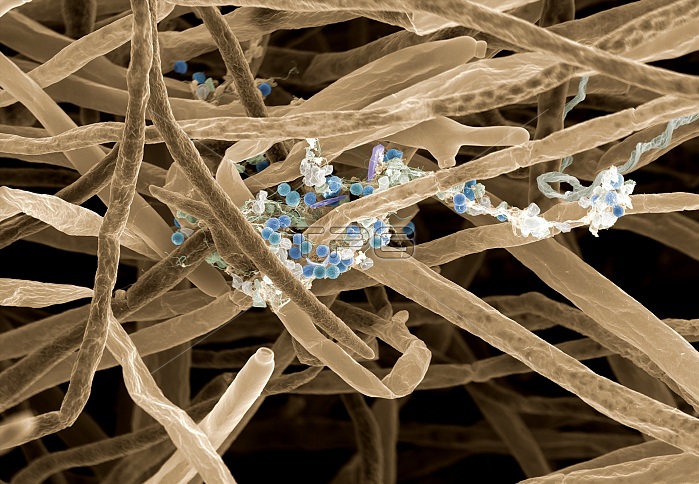
Coloured scanning electron micrograph (SEM) of the fungus Saprolegnia parasitica. It is the cause of saprolegniosis (water mould disease) which affects wild and cultured freshwater fish and fish eggs worldwide. The disease is characterised by abundant mycelial growth and long hyphae with rounded ends, containing the zoospores. The Saprolegnia lifecycle is characterized by asexual production of sporangia and zoospores, which infect new hosts, and sexual reproduction resulting in formation of oospores, that can survive harsh conditions such as low humidity and extremes of temperature, until conditions become more favourable for germination. Zoospores are produced in sporangia, which are formed at the end of the hyphae and are separated from the hyphae by basal septa. Specific stimulants known to trigger Saprolegnia zoospore release include lack of nutrients or a sudden drop in temperature. Magnification: x280 when printed at 10cm wide.
| px | px | dpi | = | cm | x | cm | = | MB |
Details
Creative#:
TOP20028671
Source:
達志影像
Authorization Type:
RM
Release Information:
須由TPG 完整授權
Model Release:
N/A
Property Release:
N/A
Right to Privacy:
No
Same folder images:

 Loading
Loading